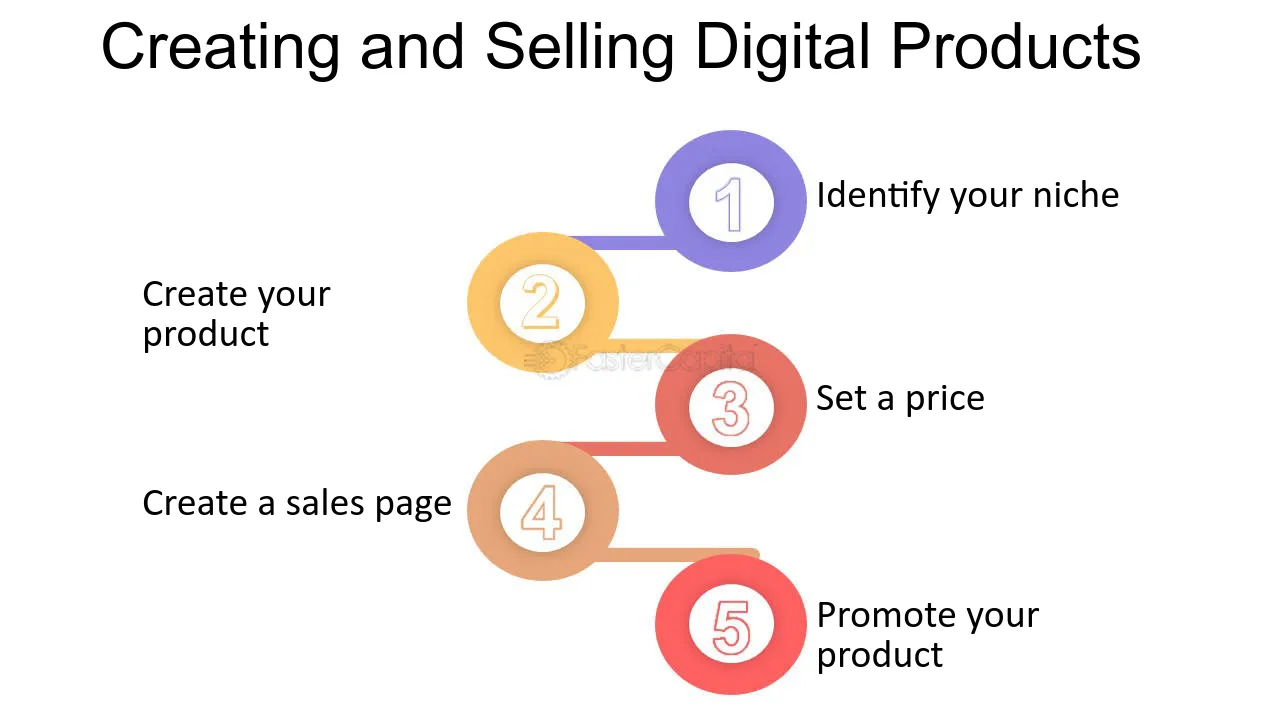You’ve to face inventory challenges, and shipping hassles to sell physical products. Many entrepreneurs feel stuck managing costs and dealing with logistical issues.
Physical goods also demand time and resources, which can limit growth. Digital products offer a simpler, more scalable alternative.
With no storage needs and instant delivery, they’re cost-effective and flexible. Doesn’t matter if you’re a small business or established brand, selling digital products can be game-changing.

Affiliate Disclaimer: I earn commission (get paid) if you click on the links and purchase a product below. My earnings do not impact the price you pay.
Tighten your seatbelt as we explore the benefits of each and why digital products are transforming how we sell.
1. Lower Overhead Costs
Digital Products:
Digital products save you from hefty upfront investments. You don’t need to worry about manufacturing costs or inventory space.
Unlike physical goods, digital products are delivered instantly without shipping expenses. It significantly reduces operational costs and simplifies your workflow.

Physical Products:
Physical products, on the other hand, require substantial investment. You’ll need to manage production, packaging, and logistics, which can add up quickly.
Storage costs can also be a burden if your inventory doesn’t move fast. Choose digital products, focus on scaling without the constraints of physical inventory.
2. Scalability
Digital Products:
The beauty of digital products is their scalability. Once you create them, you can sell them to unlimited customers without additional production costs.
This means your profit potential is not capped. Each sale adds to your revenue without increasing your expenses.
Physical Products:
Physical products, however, are limited to inventory and production capacity. Producing more items requires more resources and time.
This can strain your budget and operations. You might also face storage issues, which adds to more costs.
With digital products, you can scale your business quickly and efficiently. There are no stock limitations or production delays.
3. Instant Delivery and Access
Digital Products:
Digital products offer instant gratification. As soon as a customer makes a purchase, they can immediately download or access their product.
No waiting for shipping, no delays. This convenience significantly enhances the customer experience.
Physical Products:
On the other hand, physical products require time and money for shipping and handling. This can lead to delays and additional costs for both you and your customers.
Offer digital products to avoid these hassles and provide a seamless customer experience. Rest assured, it will lead to higher customer satisfaction and repeat business.
4. Global Reach Without Barriers
Digital Products:
Digital products are accessible worldwide without shipping constraints. Customers can buy and download immediately, regardless of their location. This greatly expands your market reach.
Physical Products:
Physical products face various limitations. International shipping laws, customs, and costs can restrict your reach. Shipping times and costs can deter potential buyers from far-off regions.
With digital products, you avoid these hurdles. You can cater to a global audience easily. It boosts your sales and customer base. No need to worry about logistics or shipping regulations.

Email List Building Course
- Learn what’s working today in email marketing
- 9-Video course
- 9-MP3 audios
- 12-Downloadable PDF files
- An Action Plan
- Cost: Free
5. Easier Customization and Updates
Digital Products:
Digital products offer simple updates to meet customer needs or fix errors. You can quickly make changes and deliver new versions. It keeps your product relevant and user-friendly.
Physical Products:
In contrast, physical products require re-manufacturing or recalling for modifications. This process is time-consuming and costly.
Want to update digital products? It’s smooth, efficient, and saves you resources. They adapt easily to market trends and feedback. You can respond to customer demands promptly.
6. Environmentally Friendly
Digital Products:
Digital products are a sustainable choice, with no physical waste created. They require no packaging. So it minimizes landfill contributions and reduces pollution.
Also, shipping emissions are cut off. All these make them an eco-conscious option. For creators and consumers, this means a smaller carbon footprint.
Physical Products:
Physical products, however, come with environmental costs. They often need packaging materials like plastic, paper, or cardboard.
This adds waste and demands natural resources. Production processes use energy, water, and other resources. Transportation adds to carbon emissions, particularly for global shipments.
7. Recurring Revenue Potential
Digital Products:
Digital products offer incredible potential for recurring revenue. You can sell them as subscriptions or licenses, like online courses or e-books.
This means consistent income flowing into your business. It can be selling an online course once and generating income month after month.
Or, offering a monthly subscription to a premium resource. These recurring revenue models can significantly boost your bottom line.

Physical Products:
Physical products can also generate recurring revenue through subscriptions or repeat purchases. But it’s generally more complex and less predictable.
Compared to physical products, digital ones provide a more straightforward way to build a sustainable income stream.

8. Easier Entry and Experimentation
Digital Products:
Digital products have a low barrier to entry for creators. You can start with minimal upfront costs, which makes testing ideas simple.
There’s no need for inventory or physical storage space. Launching a digital product is faster and more flexible. Creators can adapt and update their offerings instantly based on feedback.

Physical Products:
On the other hand, physical products require significant initial investment. You need to account for manufacturing, shipping, and storage costs.
Testing ideas is riskier because production involves higher financial commitments. Any changes often result in delays and extra expenses.
For beginners, digital products offer a safer and more cost-effective way to experiment. Don’t risk your investment in a physical product in the beginning.
9. Recommending Tools That Simplify Your Process
Affiliate tools make selling digital products simpler and more efficient. LeadPages helps you create high-converting landing pages quickly.
Kartra
Kartra is an all-in-one tool for managing product sales and memberships. With automating emails, sales funnels, and analytics, it simplifies marketing.
ClickMagick
ClickMagick helps track and optimize your affiliate campaigns. It ensures you understand what works and what doesn’t in your sales efforts.
These tools are user-friendly and save time, especially for beginners. They help you focus on growth without juggling multiple systems.
Conclusion
To wrap up, digital products offer unmatched flexibility and scalability for creators. With lower costs and easier experimentation, it’s a smart choice for beginners.
Digital tools make the process seamless, saves time and boosts efficiency. Physical products have their place but come with higher risks and investments.
Both options have unique benefits depending on your goals. Whether you’re just starting or expanding, understanding these differences is crucial.
Choose the path that aligns with your vision and resources. Remember, the key is to start small, test often, and adapt quickly. Your journey to success starts with the right choice.






